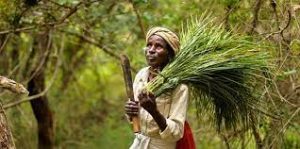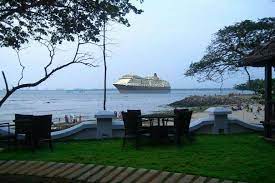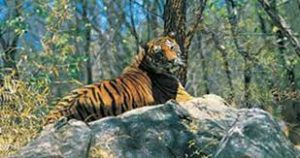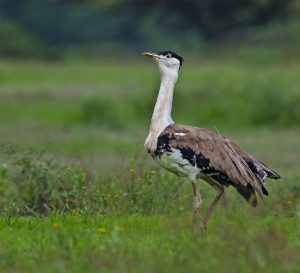Today’s Current Affairs: 23rd Jan 2024 for UPSC IAS exams, State PSC exams, SSC CGL, State SSC, RRB, Railways, Banking Exam & IBPS, etc
Table of Contents
Soligas And Yeravas:

The Soligas and Yeravas, indigenous groups living in the Western Ghats, forage foods from the biodiversity-rich region, forming a significant part of their diets.
- The recently launched book “Forgotten Trails: Foraging Wild Edibles” chronicles the diverse foods foraged by these tribes, emphasizing the importance of preserving traditional knowledge and addressing the impact of land use changes and shifting policies on their food sources.
- The Soligas are an indigenous community residing in the Cauvery Basin and surrounding hills of peninsular India.
- The Soligas speak Sholaga, belong to the Dravidian family, and practice a blend of naturism, animism, and Hinduism, with Madeshwara as their primary deity.
- Notably, they are the first tribal community within an Indian tiger reserve to have their forest rights formally acknowledged by a court of law.
- Yeravas another indigenous community in the same region, migrated from Wayanad district in Kerala and settled in Kodagu district.
- They speak the Revula language, practice Hinduism, and believe in spirits residing in natural elements.
- Yeravas, often agricultural labourers in coffee and tea plantations, include a higher quantity of tubers in their diet compared to Soligas.
- They consume mushrooms during the monsoon season, and their settlements are called ‘Kunju.’
SCOPE’s Commendation Certificate To NHPC:

National Hydroelectric Power Corporation (NHPC) Limited, a Mini Ratna Category-I Public Sector Undertakings (PSU) and India’s premier hydropower company achieved a significant milestone by being honoured with Standing Conference of Public Enterprises (SCOPE’s) ‘Commendation Certificate’ for its effective implementation of the Right to Information (RTI) Act, 2005.
- The award highlights NHPC’s commitment to transparency.
- Established in 1973, the SCOPE is the apex body for Public Sector Enterprises (PSEs) strives to foster competitiveness and excellence in its member PSEs by implementing policies and strategies to enhance their operational capacities and efficiencies.
- SCOPE, closely affiliated with national bodies like the Department of Public Enterprises, Ministry of Finance, and others, interfaces with statutory bodies such as the Central Information Commission (CIC), and Central Vigilance Commission (CVC) to address Public Sector issues.
- Internationally, SCOPE serves as the representative for employers on forums like International Labour Organization (ILO); the United Nations (UN); and , Organization for Economic Co-operation and Development (OECD).
Havisure Vaccine:

The Indian Immunologicals Ltd (IIL) a wholly owned subsidiary of National Dairy Development Board (NDDB) launched India’s first indigenously developed Hepatitis A vaccine ‘Havisure’ in Hyderabad.
- Havisure vaccine is a two-dose vaccine first dose administered at above 12 months of age and the second at least six months after the first dose.
- The vaccine is recommended for children as part of the routine immunisation as well as for individuals at risk of exposure or travel to the regions with high hepatitis A prevalence.
- In addition to this people with occupational risk of infection and suffering from chronic liver diseases also require Hepatitis A vaccination.
Hepatitis A:
- It is an inflammation of the liver caused by the hepatitis A virus (HAV).
- The virus is primarily spread when an uninfected (and unvaccinated) person ingests food or water that is contaminated with the faeces of an infected person.
- Hepatitis can be an acute (short-term) infection or a chronic (long-term) infection.
Arogya Maitri Cube : Mobile Hospital

Arogya Maitri Disaster Management Cube has been deployed in Ayodhya to bolster medical readiness and response capabilities during the upcoming ‘Pran Pratishtha’ ceremony.
- Arogya Maitri cube is a revolutionary mobile hospital equipped with cutting-edge technology.
- This cube is a part of the broader initiative named “Project BHISHM” – Bharat Health Initiative for Sahyog, Hita and Maitri.
- It is tailored to treat up to 200 casualties, emphasising rapid response and comprehensive care.
- The Aid Cube is equipped with several innovative tools designed to enhance disaster response and medical support during emergencies.
- It integrates Artificial Intelligence (AI) and data analytics to facilitate effective coordination, real-time monitoring, and efficient management of medical services in the field.
- The whole unit contains 72 easily transportable components that can be conveniently carried by hand, cycle, or even drone, providing unmatched flexibility.
- In the face of mass casualty incidents (MCIs), where requirements range from basic aid to advanced medical and surgical care, the Aid Cube stands out with its ability to be deployed within an astonishing 12 minutes.
- These cubes are robust, waterproof, and light, designed for various configurations, making them ideal for diverse emergency scenarios.\From airdrops to ground transportation, the cube can be rapidly deployed anywhere, ensuring immediate response capability.
- It has advanced medical equipment, RFID-tagged for efficient repacking and redeployment.
Willingdon Island:

The Cochin Port Joint Trade Union Forum has urged the Prime Minister of India to take effective steps to revive the lost glory of Willingdon Island.
- Willingdon Island is among the most beautiful locations in the Kochi area.
- This is a man-made island, named after Lord Willingdon who was a British Viceroy of India.
- It is among the biggest of its kind in India.
- It is a major commercial centre and has some of the best hotels in the city.
- It is also home to the Kochi Naval Base of the Indian Navy, the Central Institute of Fisheries Technology and the Port of Kochi.
- It handles millions of tonnes of freight every year.
- The island is connected to the mainland by the Venduruthy Bridge.
Green Hydrogen Transition (SIGHT) Programme:

Rs 17,490 crore has been set aside for the Strategic Interventions for Green Hydrogen Transition (SIGHT) programme, to bolster domestic electrolyser manufacturing, green hydrogen production.
- Strategic Interventions for Green Hydrogen Transition (SIGHT) Programme is a subcomponent of National Green Hydrogen Mission.
- Aim is to bolster domestic electrolyser manufacturing and green hydrogen production.
- In the initial stage, two distinct financial incentive mechanisms were proposed with an outlay of ₹ 17,490 crore up to 2029-30:
- Incentive for manufacturing of electrolysers
- Incentive for production of green hydrogen.
- Depending on the markets and technology development, specific incentive schemes and programmes will continue to evolve as the Mission progresses.
- The Solar Energy Corporation of India (SECI) would be the implementing agency responsible for the scheme’s execution.
- National Green Hydrogen Mission is implemented by the Ministry of New and Renewable Energy with an outlay of ₹ 19,744 crore from FY 2023–24 to FY 2029–30.
Parambikulam Tiger Reserve: Faunal Survey

A recent faunal survey at the Parambikulam Tiger Reserve has added 11 new species records including three birds, four butterflies and four odonates to its database.
- Parambikulam Tiger Reserve is nestled in the picturesque and extensive Nelliampathy–Anamalai landscape of the Western Ghats Mountains in Palakkad and Thrissur districts of Kerala.
- It was declared a Tiger Reserve in 2009, with a total area of 643.66 sq. Km.
- The reserve supports diverse habitat types, viz., evergreen, semi-evergreen, moist deciduous, dry deciduous, and shola forests.
- Other unique habitats like montane and marshy grasslands, locally known as ‘vayals’, are also found.
- The reserve houses teak, rosewood, sandalwood, and neem trees.
- It is credited with the world’s first scientifically managed plantation of teak. It is home to the world’s oldest and tallest teak tree named ‘Kannimara’, which is 450 years old and at a height of 40 metres.
- The common animals found are Leopard, Elephant, Gaur, Spotted Deer, Sambar, Barking Deer, Common Langur, Nilgiri Langur, Malabar giant squirrel, Sloth Bear, and Wild dog.
- The only South Indian wild goat, the Nilgiri Tahr is found on the high-altitude rocky hills and grasslands in the tiger reserve.
Great Indian Bustard : Supreme Court Direction To Centre

The Supreme Court recently directed the Centre to come clean on its plans to save the critically endangered Great Indian Bustard.
- Great Indian Bustard is a bustard found on the Indian subcontinent.
- Scientific Name: Ardeotis nigriceps
- It is among the heaviest of the flying birds.
- The species has a current viable population of 100- 150 individuals in India and mainly survives in the Thar Desert of Rajasthan that holds about 100 individuals.
- It is a large bird with a horizontal body and long, bare legs, giving it an ostrich-like appearance.
- They breed mostly during the monsoon season, when females lay a single egg on open ground.
- Lifespan: 12-15 years
- These birds are opportunistic eaters. Their diet ranges widely depending on the seasonal availability of food. They feed on grass seeds, insects like grasshoppers and beetles, and sometimes even small rodents and reptiles.
- Conservation Status:
- IUCN Red List: Critically Endangered
- Wildlife (Protection)Act, 1972: Schedule 1
- CITES: Appendix 1
The Union Home Minister and Minister of Cooperation Shri Amit Shah addressed the 71st Plenary Session of the North Eastern Council in Shillong recently.
Background:-
In his address, Shri Amit Shah said that the last 10 years under the leadership of Prime Minister Shri Narendra Modi have been the most significant for the development of the Northeast in the 75 years since independence.
About North Eastern Council:-
The North Eastern Council (NEC) is not a constitutional body.
It is a statutory organization.
It was established under the North Eastern Council Act, 1971, as amended in 2002.
Initially, NEC was an Advisory Body for the North Eastern Region (NER).
Now NEC is mandated to function as a Regional Planning Body for the North Eastern Region.
The Union Cabinet, in June 2018, approved the proposal of the Ministry of Development of North Eastern Region (DoNER) for the nomination of the Union Home Minister as ex-officio Chairman of the North Eastern Council (NEC).
The Cabinet also approved that the Minister of State (Independent Charge), Ministry of DoNER would serve as Vice Chairman of the Council. Zonal Councils
The Council comprises Governors and Chief Ministers of constituent States and three members nominated by the President.
While formulating the regional plans for the North Eastern Region, it is mandated to give priority to schemes and projects, benefitting two or more States, provided that in the case of Sikkim, the Council shall formulate specific projects and schemes for that State including the review of implementation of such project and schemes.
To fulfil its mandate, the NEC has been implementing various projects in different sectors.
Over the years, NEC has achieved the construction of 10500 km. of roads, supported the installation of 695 MW of power plants, constructed transmission and distribution lines, improved in infrastructure of 5 major airports and constructed of new airport in Tezu, Arunachal Pradesh.




